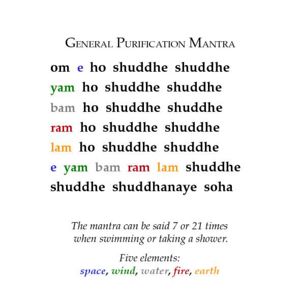Five elements: Difference between revisions
Jump to navigation
Jump to search
No edit summary |
No edit summary |
||
| Line 2: | Line 2: | ||
'''Five elements''' (Tib. ''jungwa nga''; [[Wyl.]] '' 'byung ba lnga'') — the outer elements that constitute all matter. They are: | '''Five elements''' (Tib. ''jungwa nga''; [[Wyl.]] '' 'byung ba lnga'') — the outer elements that constitute all matter. They are: | ||
*earth | *earth (''sa'') | ||
*water | *water (''chu'') | ||
*fire | *fire (''me'') | ||
*air (or wind) and | *air (or wind) (''rlung'') and | ||
*space | *space (''nam mkha''') | ||
These outer elements interact with the inner elements within our own physical body, and the potential and quality of these five elements also exist within our mind. | These outer elements interact with the inner elements within our own physical body, and the potential and quality of these five elements also exist within our mind. | ||
Revision as of 14:06, 18 June 2009

Five elements (Tib. jungwa nga; Wyl. 'byung ba lnga) — the outer elements that constitute all matter. They are:
- earth (sa)
- water (chu)
- fire (me)
- air (or wind) (rlung) and
- space (nam mkha')
These outer elements interact with the inner elements within our own physical body, and the potential and quality of these five elements also exist within our mind.
Mind’s ability to serve as the ground for all experience is the quality of earth; its continuity and adaptability is water; its clarity and capacity to perceive is fire; its continuous movement is air; and its unlimited emptiness is space.
Further Reading
- Sogyal Rinpoche, The Tibetan Book of Living and Dying, pages 251-252
- Getse Mahapandita, Husks of Unity, translated in Deity, Mantra and Wisdom, Snow Lion, 2007, 'The Layered Elements', page 114.